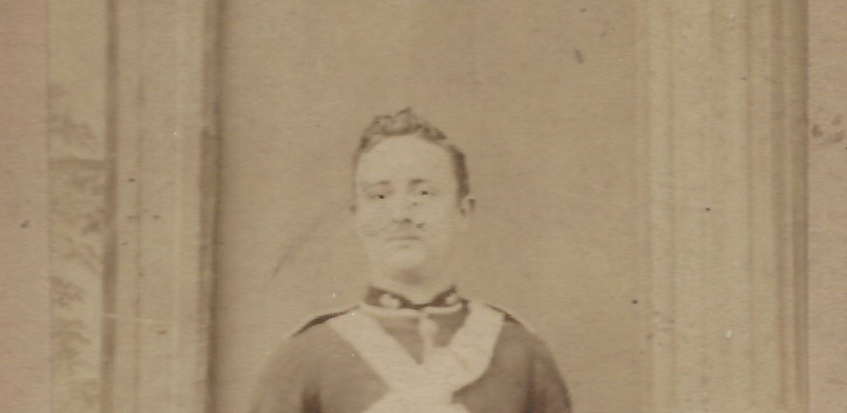August 16, 1780: Britain’s Southern Strategy At The Battle of Camden, SC
You are there: As the Revolutionary War enters its third year, Britain makes a radical shift in its plans to prosecute the conflict. Instead of driving inland from its two northern garrisons in New York City and Philadelphia, it adopts what becomes known as its “Southern strategy” focused on taking control over Georgia, the Carolinas and Virginia.
The catalyst for this change begins with the rebel victories in October 1777 at the Battles of Saratoga where General Horatio Gates’ troops force British Commander John Burgoyne to surrender his entire 7,000-man army. It is, however, the aftermath to the defeat that resonates back home when France formally recognizes the United States and signs a treaty to provide military support.
Suddenly the vision of the French navy swooping down on the Crown’s hugely profitable sugar plantations in Jamaica, Barbados and Grenada must be weighed against continuing along the prior path against the Americans. Also, as Britain’s Treasury Undersecretary Charles Jenkinson point out, something must be done soon to curtail the mounting costs of the current war.
Hence the “Southern strategy” materializes. Instead of grinding its main infantry in stand-up battles, Britain intends to conduct raids on patriot towns utilizing small bands of Regulars alongside “Loyalists,” believed to be in large numbers and eager to step up and fight for the Crown.
Victories in the south will also provide access to sought-after commodities such as cotton, rice, tobacco and indigo, together with a potentially valuable territorial bargaining chip in future negotiations to end the war, a topic already being considered.
Fighting in the North winds down after the drawn clash on June 28, 1778 at Monmouth Court House where the Continentals demonstrate their capacity, after Valley Forge, to stand toe to toe with the redcoats.
The shift South gets underway when Lt. Colonel Archibald Campbell sails from New York with an invasion force of 3,000 men and lands just below the port city of Savannah. On December 29, 1778, he outflanks General Benjamin Lincoln’s 850 man defensive front and achieves a swift victory, with only 24 casualties vs. over 500 for the Americans.
The second British blow comes at Charleston, South Carolina, as a 13,000 man British expeditionary force under Lord Cornwallis and Henry Clinton begins a siege against the Patriot’s 6,500 defenders. This lasts for six weeks, until May 12, 1780, when a surrounded Lincoln is forced to make the largest surrender of the war involving some 5,500 troops.
Bolstered by these wins at Savannah and Charleston, Cornwallis’s campaign to move inland gets underway, led by Lt. Colonel Banastre Tarleton and his “Loyalist Dragoons.” On May 20, his 150 cavalrymen attack John Buford’s larger force at Waxhaws along the upper border of South Carolina. When Buford tries to surrender, Tarleton announces “no quarters” and over 250 Americans are killed or wounded, many after laying down their arms.
The early summer brings more vicious raids from Ramsour’s Mill (6/20) to Rocky Mountain (8/1) to Hanging Rock (8/6), in what becomes a civil war between Patriots and Loyalists. A British General comments on the nature of the fighting:
These people are beyond humanity…every hour exhibits dreadful murder and violence.
In response to Lincoln’s capture at Charleston, Congress overrules Washington’s wish to send Nathanael Green to confront Cornwallis and Tarleton, and instead chooses General Horatio Gates. He departs from base camp at Cox’s Mill, North Carolina, on July 25, 1780, with a largely inexperienced force that reaches 4,000 men, and heads toward Camden, South Carolina, 100 miles to the southwest.
The British garrison there numbers 2,100 under Cornwallis, and Gates hopes to set up a defensive position north of the city and draw the redcoats out on favorable terrain. But the plan falls apart when a night march on August 15 to get into position accidentally runs into Cornwallis’s troops coming out to strike first.
A helter skelter attempt at deployment finds the Americans left wing manned by untrained Virginia militiamen and facing a unit of veteran British Regulars. As the redcoats advance and shouts of “fix bayonets” echo across the field, a panic sets in with the Patriots running from the field – including Gates himself who joins the flight. Meanwhile, absent their commander, his right wing fights on heroically under Baron Johann de Kalb, who is mortally wounded, until it too is overrun and retreats.
The magnitude of the loss at Camden is reflected in the killed or wounded numbers – 300 for Britain vs. 900 for the Americans, along with another 1,000 men and 8 cannon captured. For Gates, the defeat, coupled with his humiliating exit from the battle, ends his military career.
But despite these early successes, the Crown’s “Southern strategy” ultimately fails.
In October 1780, General Nathanael Greene arrives to earn his sobriquet as “Savior of the South.” After Cornwallis tries to follow up his Camden win by invading North Carolina, Greene wages an effective guerilla campaign in his rear. His victory over Tarleton at Cowpens on January 17, 1781 begins a string of British defeats that drive Cornwallis into Virginia and his ultimate surrender at Yorktown on October 17, 1781.
In hindsight, Britain’s premise that Loyalists remain in America as of 1780 proves correct. Included here are figures like William Franklin, Benjamin’s son; Georgia’s Thomas Brown Lt. Colonel of the King’s Rangers; the former slave, Boston King, who organizes the Black Loyalists; and the influential Mohawk Chief Joseph Brant (Thayendanegea) who meets George III and leads four tribes against the Americans.
But there are simply not enough of them even in the Cavalier South, nor can they be trained overnight to stand in for the British Regulars. The end of the war proves that.
